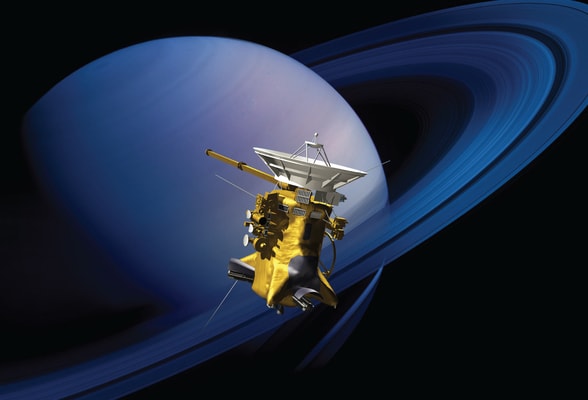
You may have read our piece last week about the spacecraft Cassini, and how it was going to meet it’s demise in a Grand Finale. What wasn’t exactly clear was why Cassini was coming to an end. When we reported on it last week, it did seem kind of odd, didn’t it? I mean, it has been on a 20 year mission, so to set it ablaze by sending it into Saturn seemed a bit much. It’s also a bit odd because spacecraft’s don’t usually meet this kind of demise. Most, remain drifting in space. In fact, the Voyager 1 space craft, Cassini’s senior, still coasts through interstellar space sending data back from places that most of us have a hard time comprehending. So why was Cassini put to death?
One reason that seems to get cited a lot is that Cassini is running out of fuel. Cassini only has 61 of its original 6,565 pounds of propellant. Like me, you probably hadn’t stopped to think about what a spacecraft might run on. Or maybe you’re not like me and this seems obvious. This, however, seems incredible to me, given how long it has been in space. However, the fuel is only used for reorienting the spacecraft’s trajectory. In theory, the Cassini team could have used that fuel to push the spacecraft into a stable orbit around Saturn. Cassini could have even still collected data, since all of its instruments run on power from a different, much more long lived source.
But that’s not the real reason it was put to death. The real reason is because of an international treaty that has a rule that you cannot contaminate potentially habitable worlds. In order to comply with this rule, NASA maintains an Office of Planetary Protection in order “to preserve our ability to study other worlds as they exist in their natural states; to avoid contamination that would obscure our ability to find life elsewhere – if it exists; and to ensure that we take prudent precautions to protect Earth’s biosphere in case it does”. This all sounds a bit too much like science fiction, doesn’t it? Or is it just me?
Saturn possesses zero indications of life, and even if there were, the spacecraft and any possible microbes attached to said spacecraft would be completely destroyed in the planet’s thick atmosphere. Which is why Cassini met a fiery death early Friday morning. This aspect of the mission does seem kind of sad to me. I’m sure that a lot of people who worked on the mission would feel the same way.
Cassini had been around for many years, and brought us some incredible images of Saturn. So from that perspective, I find it sad. But if I think about it from the NASA’s reason it does seem a little odd. But perhaps it’s because I have a hard time thinking about space exploration in any real way. Not that I don’t find it fascinating, or understand what they’re doing. But because I can’t wrap my brain around what might be out there. Or what might become habitable in the future. So I struggle with this “treaty”. Like I said, it sounds like something out of a science fiction novel and that kind of scares me.



